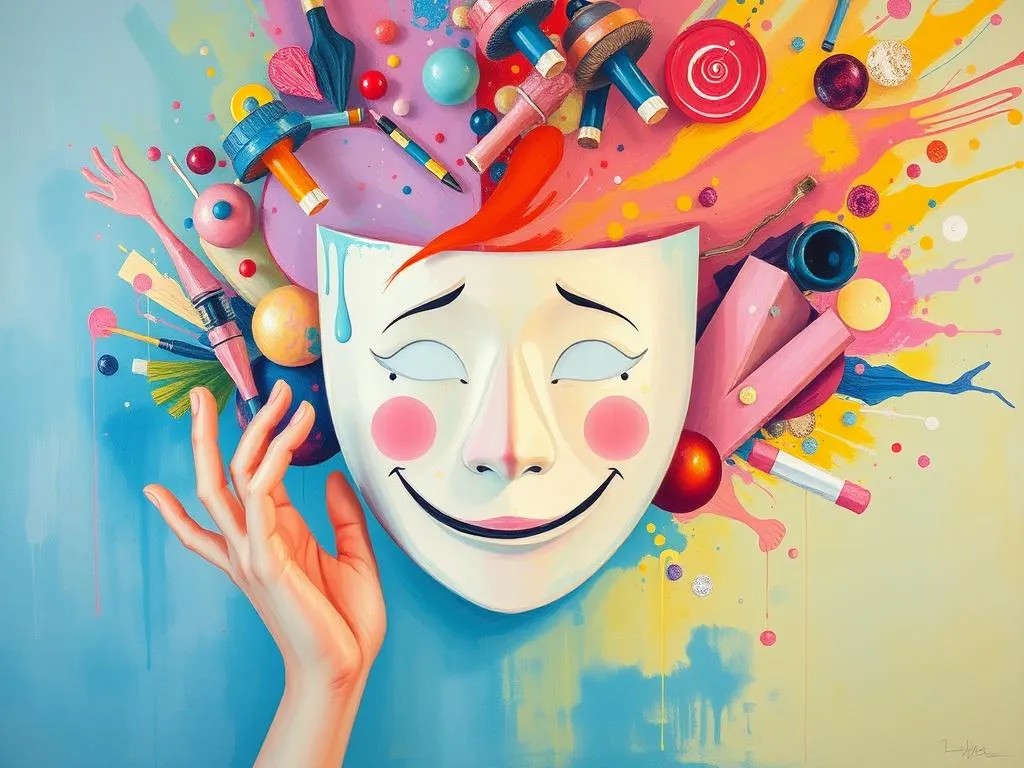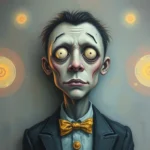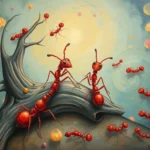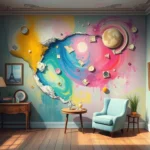
Have you ever woken up from a dream and thought, “What on earth did that mean?” Dreams can feel like a bizarre theater production, where symbols take center stage, playing roles that often elude our understanding. Each character, each setting, and even the emotions we feel can reflect our inner world, desires, and fears. They serve as a bridge between our conscious reality and the unconscious mind, unveiling secrets we may not even know we hold.
In our journey through dreams, we encounter symbol impersonation—the phenomenon where familiar images and figures morph into something unexpected, revealing deeper truths. This article will explore the layers of dream symbolism, diving into specific experiences, and ultimately guiding you toward personal growth. So, let’s pull back the curtains and illuminate the hidden messages behind the dreams we have.
Behind the Mask: Decoding Dream Symbols
Every dream is a symbolic language, rich with meaning and nuance. The symbols that appear in our dreams can often represent our emotions, fears, and desires. Here are some common dream symbols and their potential interpretations:
- Animals: Often represent instincts or traits. For example, a lion might signify courage and leadership, while a snake could indicate hidden fears or betrayal.
- Water: A symbol of the unconscious mind and emotions. Calm waters could suggest peace, while turbulent waves may hint at emotional turmoil.
- Buildings: Often signify the self. The state of the building—whether crumbling or lavish—can reflect self-esteem and personal growth.
- Flying: Generally represents freedom or a desire to escape. The way you fly—effortlessly or with struggle—can indicate your feelings about control in your life.
- Chase: A common theme that typically reflects feelings of anxiety or avoidance in waking life. The pursuer may represent a part of yourself you are trying to escape from.
Understanding these symbols is the first step in unraveling the complex tapestry of your dreams. However, it’s essential to remember that personal experiences and emotions can alter the meanings of these symbols.
Dreamscapes: Tales from the Subconscious
Let’s delve into a few scenarios that illustrate how symbol impersonation can manifest in dreams. Each tale showcases the unique nuances of dream interpretation, offering insights into the inner workings of the mind.
The Spirited Chase
Imagine dreaming of being chased by an unknown figure through a dark forest. As you run, you feel an overwhelming sense of fear. The dream symbolizes your struggle with an aspect of your life you wish to evade—perhaps a looming deadline at work or an unresolved conflict in a relationship. The forest represents the unfamiliar territory of your emotions, where clarity is obscured. This chase is not merely a flight from danger; it’s a call to confront what you’re avoiding.
The Shattered Mirror
In another dream, you find yourself standing before a cracked mirror. Each reflection shows a different version of yourself—some happy, others sad, and some distorted. This scenario reveals your internal conflict about self-identity and self-image. The mirror serves as a metaphor for how you perceive yourself versus how you wish to be seen by others. It’s an invitation to explore these varied facets of your identity and embrace the wholeness of who you are.
The Endless Staircase
Picture yourself climbing an endless staircase that spirals into the void. Each step feels heavier than the last, and you begin to question the purpose of your ascent. This dream can symbolize feelings of stagnation or frustration in your waking life. The staircase represents your journey towards a goal—whether it’s career advancement, personal development, or a relationship. The endless climb suggests that you may feel like you’re making little progress. It’s a gentle nudge to reassess your ambitions and redefine what success looks like for you.
The Abandoned House
You wander through an abandoned house, filled with dusty furniture and forgotten memories. This dream scenario often reflects your past experiences and how they shape your present. The house represents your mind, and the neglect signifies unresolved issues or emotions that you’ve tucked away. Exploring the rooms in the house—some dark and eerie, others filled with light—can help you confront and process your past, allowing you to make space for new beginnings.
The Colorful Canvas
In a different dream, you find yourself painting a vast canvas with vibrant colors, each stroke evoking a different emotion. This dream can symbolize your creative potential and desire for self-expression. The act of painting indicates a need to express feelings that may have been suppressed in waking life. It invites you to tap into your creative side, encouraging you to explore new avenues of expression, whether through art, writing, or other forms of creativity.
Unmasking the Self: Pathways to Personal Growth
As we navigate the dreamscape, we unlock the door to personal growth and self-discovery. Understanding dream symbolism and the narratives they convey can lead us toward significant insights and transformations. Here’s how you can harness the power of your dreams for personal development:
Embrace the Journey
Dreams are not just random images; they are signposts on your journey of self-awareness. By keeping a dream journal, you can record your dreams and their meanings, helping you track patterns and recurring themes. This practice can illuminate hidden anxieties or desires, providing clarity on your waking life.
Confront Your Fears
When you encounter dreams of pursuit or conflict, use them as an opportunity to confront what you may be avoiding. Reflect on the emotions that arise during these dreams and identify whether they relate to specific situations or relationships in your life. This confrontation can be the first step toward resolution and healing.
Explore Your Creativity
Dreams often encourage self-expression, urging you to explore your creative side. Whether it’s through writing, painting, or any other form of art, find ways to channel the emotions and themes from your dreams into tangible forms. This process not only serves as an outlet but can also lead to profound insights about your inner self.
Seek Guidance
Sometimes, the meanings behind our dreams can be complex and layered. Seeking guidance from a therapist or a dream interpretation group can provide additional perspectives and interpretations. Engaging in discussions about dreams can help you uncover new insights and foster a deeper understanding of your psyche.
Cultivate Mindfulness
Finally, cultivating mindfulness can enhance your ability to connect with your dreams. Meditation and mindfulness practices can help you become more attuned to your inner voice, allowing you to recognize and interpret the subtle messages your dreams convey. This awareness can lead to greater emotional resilience and clarity in your waking life.
As you journey through the world of dreams, remember that each dream holds the potential to reveal something significant about yourself. The characters, symbols, and narratives are all part of a larger story—one that reflects your inner truths, aspirations, and challenges. Embrace the lessons embedded within your dreams, and allow them to guide you on your path to self-discovery.
Take a moment to reflect on your last dream—what messages lie hidden beneath the surface? As you unmask the symbols and engage with their meanings, you may find that understanding your dreams is not just about interpretation but about embracing the fullness of who you are. Your dreams are a canvas; paint it with intention, curiosity, and a willingness to explore the depths of your consciousness.







